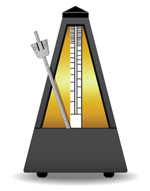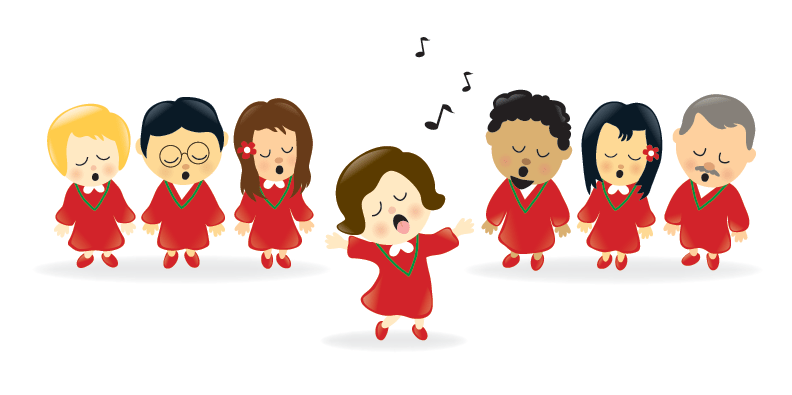In music the whole is greater than the sum of its parts – or is it?
This saying may be true when talking about how a song or piece of music was written. A composer or song-writer’s aim is to often create a piece of music that is elevated through different parts playing together, which simply would not happen if you heard each part of the same song played one after the other.
However, when it comes to performance technique, this is not always the case! Singing in a choir or other ensemble takes a huge amount of teamwork, and if part of this team does not pull its weight, it can be noticeable. The process of learning a song with a choir is to learn the details of the music, such as the melody, rhythms and so on. Once the choir has a good grasp of these elements, the conductor is then able to fine-tune the overall sound including blend, balance and diction. This article will start by focusing on the first part of the process, which is also known in the music world as ‘note-bashing’, and then explain how to adapt to the performance situation, putting your learning into practice.
How the Brain Handles Performance
Processing music and re-applying what you heard is one of the most complex aspects of performance. Firstly, you must listen to music externally, then your brain processes tonnes of information on what you are hearing, before you re-apply that information in the sound you produce yourself. If you think about it, that’s a lot for your brain to do!
And just like learning how to sing better (or learn an instrument) requires you to train your brain, holding your own part in a vocal group does too.
I knew someone at school who had a pretty decent voice, and being a tenor he was never out of a job in the choir! However, while his sound and pitch and dynamics and so on were good, he could never hold his own part. Instead, after about a minute he would latch onto the tune and just sing that.
If everybody did that, there would be no such thing as harmony or counterpoint…
 There is a skill called active listening, which means actively concentrating on music enough so your brain can process information, instead of just hearing music as background noise. Here are three articles to help you learn active listening:
There is a skill called active listening, which means actively concentrating on music enough so your brain can process information, instead of just hearing music as background noise. Here are three articles to help you learn active listening:
- How to Hear More in the Music You Love
- The #1 Essential Activity for Every Musician
- Close Your Eyes – to Open Your Ears
Solo Work to Train Your Brain
There is a process in order to learn how to sing your own part, which very heavily involves your ears. Latching onto the tune seems like the easy option: it’s the most important part, and often in choirs the part singing the tune is trained to sing slightly more prominently.
So to help you avoid latching on to the tune accidentally, here’s a step-by-step guide to getting you better at holding your own part.
1. Isolate and learn your own part
Unless you’re really good at sight-reading or learning songs by ear, you need to sit down with only your part and learn it. Once you’ve got a good idea of what your own part sounds like, and you are able to reproduce the sound yourself, you will be able to listen more carefully to other aspects of your choir around you.
In a way, doing this teaches your brain that your part is actually a “tune” in its own right.
If possible, sing your part through with a practice track which plays the other parts as well. There are lots of these on YouTube and other websites, where your part is played slightly louder than the others. If that isn’t available, find a regular recording of the song you are practising, so you can sing your part along with that. In this way you can get used to hearing what your part should sound like with everything else. Quite often in these practice tracks, different instruments are used rather than voices which can help you to listen to them more easily until you are ready to sing confidently with other voices.

2. Be prepared to adapt as you listen
Holding your own part in a group isn’t simply a matter of learning your part and then blocking out everything else when you perform. If you do this you may be technically singing your part correctly – but the whole will definitely not sound greater than the sum of its parts!
So you need to pay attention as you perform, and listen to the other parts. Lots of people think that blending your own part in a choir is just about having good pitch. Pitch is important but this isn’t entirely true: yes, you need to be good enough at pitch to know which notes you need to be singing compared to other parts, but having a great rhythm and inner metronome will also help you to adapt to external changes in the music. This is essential for holding your own part and keeping it tight, as it will sound all over the place if the timing is sloppy!
You can learn more about achieving good blend in a choir here. In this article we’ll focus on the rhythm skills required to hold your own part well.
Remember – performing music is a two-way process of expressing yourself and listening to the other musicians around you. Without sufficient ear training and active listening skills, it is much harder to improve your performance.
Learning vs. Adapting
Learning is essentially taking in information with regards to different aspects of the music, remembering it in your long term memory, and then reproducing it. However there is also a lot of spontaneity and adapting to the situation required for good musical performance.
For example, one conductor may want to take a song at a certain speed or tempo, while another conductor will do it at another speed. They may decide to change dynamics (louds and softs) a little in order to obtain the best balance. It is also easy to fall into bad habits, such as dragging the tempo, which a conductor will need to get you out of quickly. Even things like handling mistakes during a rehearsal or performance requires adaptability and spontaneous decision-making. More advanced musicians even use musical spontaneity to create finesse in their playing and singing in the spur of the moment, making sure it always sounds fresh and exciting.
So you are probably wondering: how on earth can you become better at adapting and decision-making in the realm of music? It’s all down to your ears, and one specific thing you need to be aware of as a member of a choir or vocal ensemble:
The pulse.
The pulse is the glue holding the song together. Without it, there would be no guidance as to where the next note goes, and the song would be a complete mess. There are times when the music speeds up or slows down, such as at the end of a final chorus, but it is all controlled.
The way to become more aware of the pulse is to develop what’s called an “inner metronome”. Someone with a good inner metronome is always aware of the steady ongoing pulse, meaning there is less chance of them rushing or dragging their notes. To become more aware of the pulse, of course you need to listen to it. There are often clues in the music, such as more emphasis on the first beat of each bar. Make sure you know what time signature the music is in too – is it in 3 or 4 for example? If you don’t know, this can really throw off your inner metronome, as time signatures and the pulse go hand in hand.
Developing Your Inner Metronome
 Here are two exercises you can do to improve your inner metronome:
Here are two exercises you can do to improve your inner metronome:
- Play any song you like and listen carefully to the beat. Once you think you’ve got it, clap the pulse. Remember – the rhythm is different to the pulse, so be careful! As you get better, play more complicated songs that have more complex rhythms and/or less obvious clues as to where the beat is.
- Play any song you like to sing, and know pretty well. Sing along to the song, then at certain intervals, mute the song but keep it playing. As the song is muted, keep singing. Keep the song muted for about 5 seconds before unmuting it. Are you out of sync, or did you manage to keep a good inner metronome and stay in sync?
Another great tip is to learn how to sub-divide. If you ever thought music wasn’t mathematical, think again!
The best musicians don’t just have the pulse in their head. Internally, they take each beat and sub-divide it into halves, then quarters and even eighths.
Why? Musicians naturally anticipate the next beat, so if you have a series of strong beats with lots of space in between, it’s easy to move on to the next beat too early. This is called rushing.
A way to prevent rushing is to take a series of beats, let’s say 4 (1, 2, 3, 4) and subdivide them into “1 and, 2 and, 3 and, 4 and”. This way, you know when each beat is coming, but you have to make room in between by saying ‘and’. This prevents you from potentially rushing to the next beat too early. Once you spend a bit of time training yourself to do this, it will become second nature.
The opposite of rushing is known as dragging, where you don’t internally spread sub-divisions equally, leading to a later strong beat every time and causing you to get slower… and slower… This is particularly common in songs that are not particularly slow or fast.
One thing to remember is that sub-dividing does not stop at halving each beat. You can go to a quarter or even eighth of the beat, where it is so fast that there’s hardly any space at all in between. This makes it much easier to keep easy subdivision and keep the driving force of the pulse going.
Repeat the first exercise above, but this time clap a sub-division of the beat. So if there were four beats originally, you would be clapping eight beats twice as fast. Then try to clap sixteen beats so your claps are four times as fast. If you can’t clap your hands that quickly, tap on your lap instead, alternating hands.
Once you get better at listening to the pulse, you will realise just how much of music-making is encompassed by it. Rhythms will slot into place much better. You will get a better idea of note order and melodies in your part (which will then become part of your long term memory). But more importantly you will be able to hold your part confidently enough, so if something does go wrong, you can fix it.
Don’t Be Overwhelmed!
This may feel like a lot of information to take in, but it’s not designed to be taken in overnight! It’s all step-by-step too, so first focus on learning your part effectively. Remember, the brain has to take information in by listening, so use your ears to take in information in the form of sound. If you have music in front of you too, that’s great, and it can be used as a guide, but in my experience it is much easier and far more effective in the long-term to learn music primarily by ear. Even if you have more of a visual memory than an auditory memory, such a significant factor of holding your own part in a choir is through aural processing, so you should be striving to improve your listening capabilities anyway.
Once you can learn music more efficiently, then you can start improving your adaptability to hold your own part even as the music changes around you. Good luck – and keep singing!







